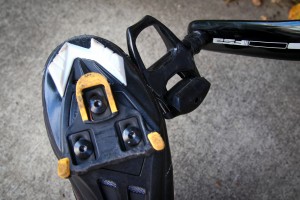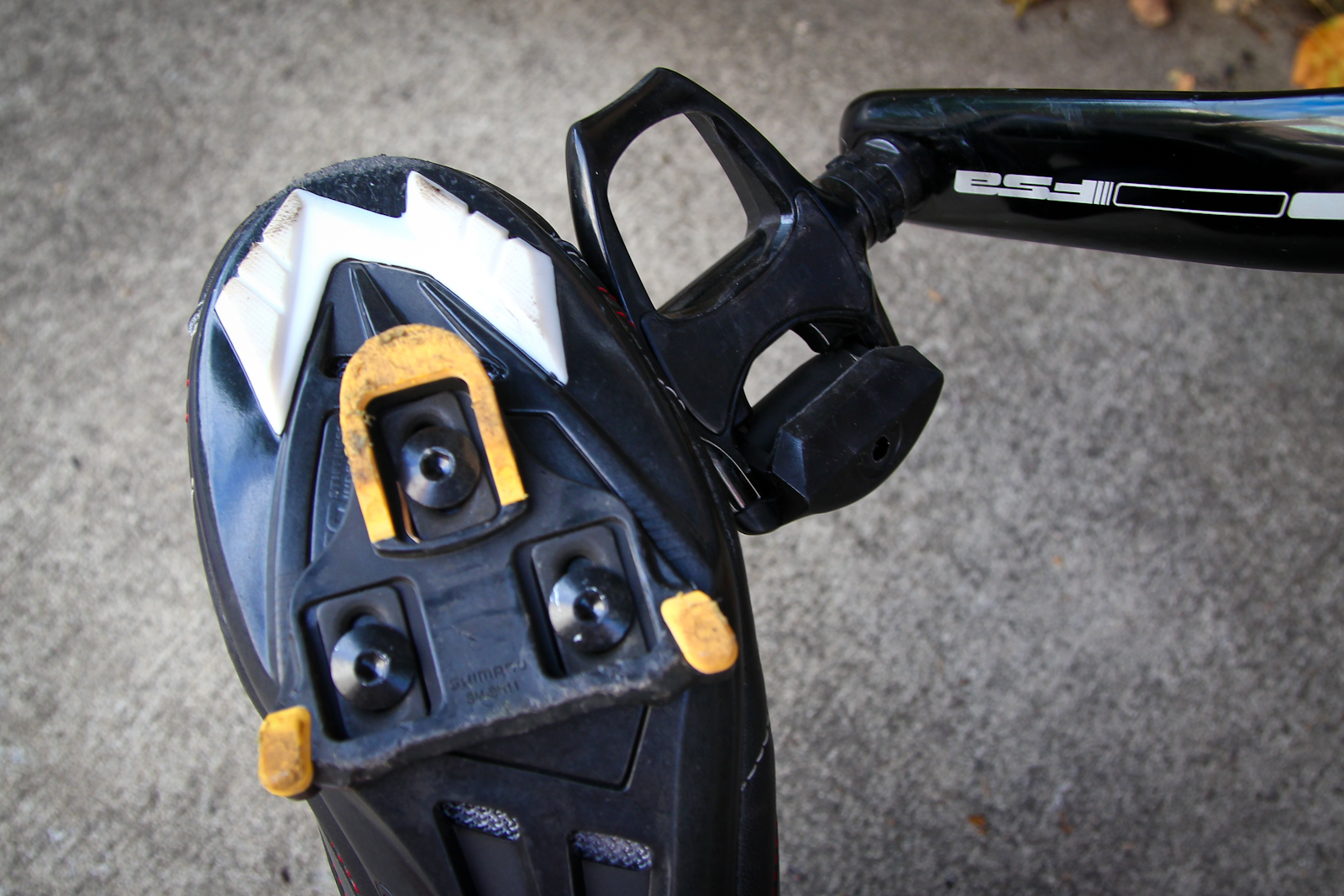Every woman’s guide to riding with clip-in pedals

I work in a bike shop and I often get asked about clip-in pedals from both men and women. But it seems that the women are a little more nervous about the idea. They fear falling off and injurying themselves, or worse still embarrassing themselves. I’m really lucky that my partner coerced me into riding my road bike with clip-ins from day one and I never looked back.
So to make it a bit easier here’s some background information about clip-in pedals and the different types and some tips to get started. I’ll focus mainly on road pedals and cleats because that’s what I know. There are however different systems available for mountain bikes and other types of riding.
There are some good reasons why you might want to become more attached to your pedals. Clipping in can stop your foot slipping off when applying power, help align your foot to ensure maximum efficiency, and potentially aid your pedal stroke by allowing you to pull up on the pedal as well as push down.
Broadly speaking, clip-in (also known as clipless because they don’t involve toe clips) pedal systems can be split into two groups – those for road riding, and those for other types of riding, such as commuting, mountain biking and touring. The second type are often called SPD-style pedals (Shimano Pedalling Dynamics), referring to the Shimano brand that developed and popularised this style.
Clip-in pedals work best with shoes that have cleats attached. For road bikes, cleats have a three-bolt pattern, while the SPD-style clip-ins are a two-bolt pattern. Some road cycling shoes offer the option to mount both either type of cleat.
The transition to clip-in pedals can be confusing and scary at first. Most riders I know have an embarrassing story to tell about forgetting to disengage their pedals when coming to a stop and taking a slow-motion sideways tumble and I’m no exception. So here’s few tips to try and avoid your own embarrassing moment (s).
Most clip-in pedals can be adjusted to reduce the spring tension making it easier to clip in and out. In most cases, the tension is adjusted by a small Allen key bolt at the back of the pedal; adjusting clockwise will tighten the spring tension, and anti-clockwise will loosen it. It is usually a good idea to start off with loose spring tension, and as you build your confidence up in clipping in and out, the tension can be ratcheted up.
Before heading out for the first time it is a good idea to practice unclipping while leaning against a wall, or in a doorway or even with your bike on an indoor trainer.
To clip in, move your foot down towards the pedal, feel the front of the cleat catch the lip of the pedal, push down and forward with your heel, there will be a ‘click’ as the pedal engages.
To clip out, get ready when you start to break by pivoting your ankle outwards. The pedals will release and you can put your foot down on the ground. It’s good to get into the habit of clipping out when you are coming towards a busy intersection and you know you’ll need to stop.
Some riders have a dominant leg, but if you don’t have any particular habits for what foot you push down on when starting off from a standing start, it’s a good idea to leave the right foot clipped in and remove the left from the pedal. This way, if you lose footing or slip, you will fall away from cars rather than towards them, and you won’t risk damage to your rear derailleur.
When commencing from a standing start, a couple of strong pedal strokes will clear an intersection and move you away from the worst of the congestion if riding in traffic. Once you’ve got this little bit of extra space, you’ll be less frazzled and able to safely engage your foot in the pedal if you haven’t been able to get it completely in first time around.
It’s also important to keep an eye on the condition of your cleats, as they will wear down over a period of time. To prolong their life-span, it’s a good idea to swap them from one foot to the other when they’re about half-worn, as the foot that you click out at traffic lights will wear down quicker. You can also buy plastic covers often referred to as ‘café covers’ to put over the cleats when you’re walking. I use them and they’ve certainly prolonged the life of my plastic road cleats.
My final tip is to buy some really nice bike shoes like my S-Works road shoes and you’ll enjoy putting them on every time.
Like any new activity, it can be very daunting at first, but it’s certainly worth persisting.


Thank you for this post. I am brand new to cycling and purchased my first pair of cleats and pedals yesterday. I look forward to trying them out this week in preparation for my first 100k ride in April.